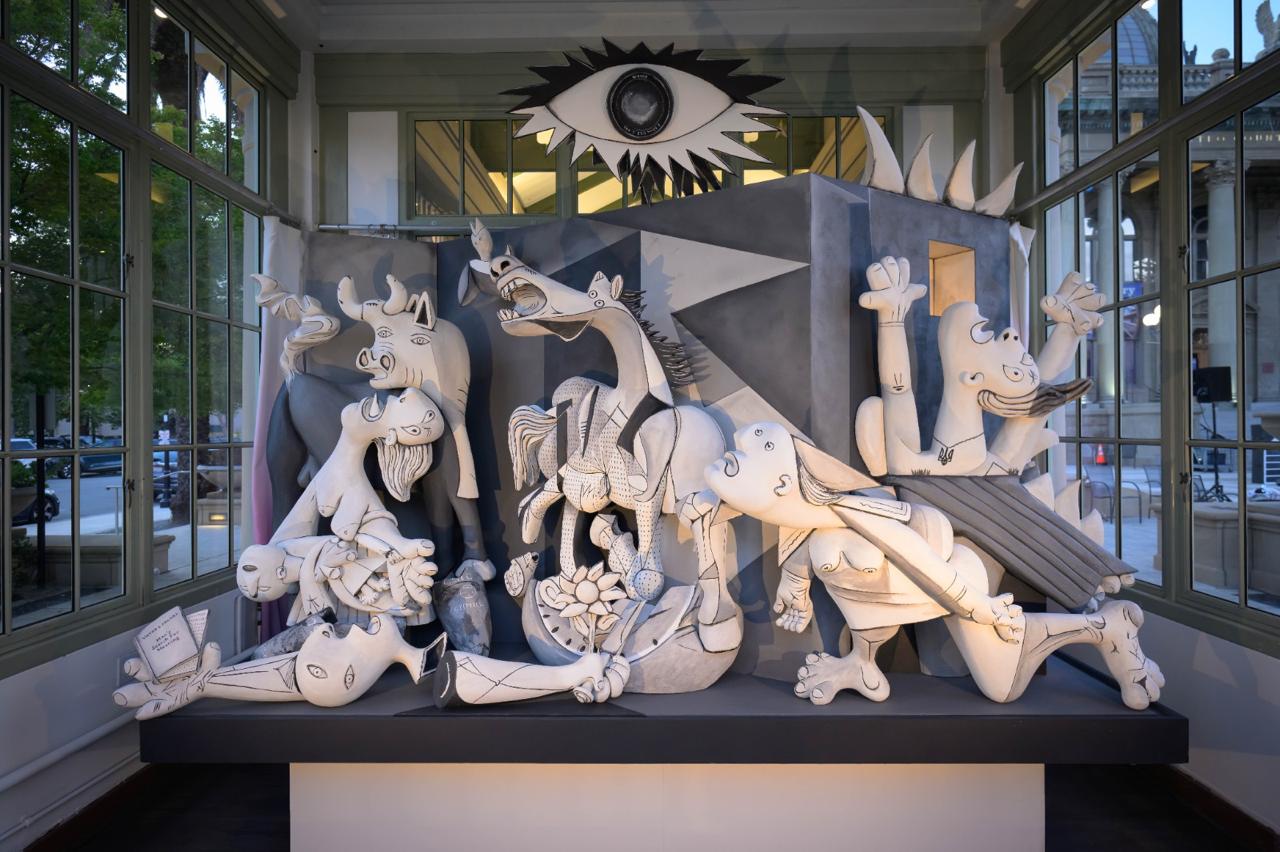
Listen to this note:
Time and again, no matter what the subject is, wars always destroy worlds, those of those who experience them firsthand. Artists throughout time have shown the horrors of these wars, such is the case of Picasso with Guernica, a work that impacted the Mexican artist, Fernando Escartiz, who, with minor modifications to the original work, has brought Pablo's pieces to 3D, in an exhibition that brings the viewer closer to reflecting on current basic conflicts.
With pieces nearly 14 feet long and 7 feet high, to name just a couple, Escartiz sought to reflect the impact of being confronted by the work of Pablo Picasso, which resides in the Museo Nacional Centro de Arte Reina Sofia, in Madrid, Spain, where he traveled in January to seek inspiration.
The Escartiz exhibition, with 8 monumental pieces, is at the Art Kiosk of Redwood City (2208 Broadway), from July 14 to 21, presented by Redwood City Improvement Association and Fung Collaboratives.
This is the third time that Fernando has presented his art in this great space in the city, which vibrantly embraces what the artist has put forward, who on this occasion makes a profound reflection on the bi combat at a global level.
?In January of this year I travelled to Madrid and saw Guernica. I had seen it before, but this time it was a stronger shock. It is a very impressive painting, but this time, looking at the painting, you cannot stop thinking about the conflicts that exist today; so the painting is still very contemporary, we still have the kind of horrors that wars generate?, he told Pensula 360 Press exclusively.
At that time, he said, the idea of making Guernica in 3D arose, "because what I like is sculpture and shapes, apart from the fact that I have always been very attracted to Picasso's work."
And the exhibition is practically Guernica: the human and animal figures, but with small updates, thinking about current times.
There are nine pieces in total: the horse, a warrior, a dove, the mother with the dead child, a kneeling woman, the burning house, the eye, and the woman with the letter.
